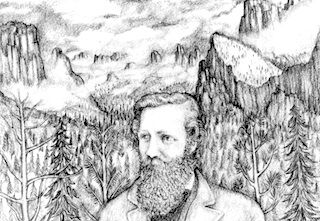|
J. William T. "Bill" Youngs, American Realities, Volume Two:
Historical Episodes from Reconstruction to the Present, Chapter Four |
"Statue of John Muir," courtesy of the Wikipedia Commons
|
4. The Birth of Environmentalism
|
SummaryThe late nineteenth century was an era of business. Its heroes were men like Andrew Carnegie, who created giant industries, and its spirit was so strong that Booker T. Washington told his black students that in commerce they had “a man’s chance” to prosper. In every age, however, some people oppose the prevailing values: Loyalists oppose a revolution; abolitionists reject an institution. In the age of enterprise, some Americans challenged the business ideal of unfettered individualism. Labor unions sought the right to bargain; farmers attempted to regulate railroads and grain elevators. Those years also brought American conservationism to fruition. John Muir was the foremost spokesman for that movement, a pastoral voice in an age of steel. He was as bright and energetic as any business leader, but he chose to celebrate nature rather than transform it. His life illustrates the course of the early conservation movement and provides an example of how some human beings influence history by choosing career paths contrary to the dominant ideas of their age.
|
Author reads from the Text
It is possible to see Muir as a cantankerous individualist, one of those men whom Henry David Thoreau described as marching to the beat of a “different drummer.” Certainly he was exceptional. More perhaps than any other American, Muir sought continually to expose himself to the wilderness. He climbed a tree in a windstorm, rode down a mountainside on an avalanche, and stood in the open to watch the progress of a Yosemite earthquake. On his hiking expeditions he frequently carried only a metal cup, tea leaves, and some dry bread, preferring simple fare and a bed of pine needles to a cluttered campsite.
But John Muir was not a hermit or a misanthrope. In fact, he was to become one of the most influential men of his day. During these years when Americans were settling the last frontiers, respect for nature became part of the American credo. Muir helped make it happen. He wrote articles in national magazines, founded a wilderness preservation society, and fought for the protection of wilderness areas. Eventually his name would adorn campsites, lakes, mountains, and forests. It appears more often than that of any other man in California’s nomenclature. The Muir Woods near San Francisco, the John Muir Trail along the Sierra Nevada crest, and the Muir Grove in Sequoia National Park are a few of the more famous sites bearing his name.
But John Muir was not a hermit or a misanthrope. In fact, he was to become one of the most influential men of his day. During these years when Americans were settling the last frontiers, respect for nature became part of the American credo. Muir helped make it happen. He wrote articles in national magazines, founded a wilderness preservation society, and fought for the protection of wilderness areas. Eventually his name would adorn campsites, lakes, mountains, and forests. It appears more often than that of any other man in California’s nomenclature. The Muir Woods near San Francisco, the John Muir Trail along the Sierra Nevada crest, and the Muir Grove in Sequoia National Park are a few of the more famous sites bearing his name.

